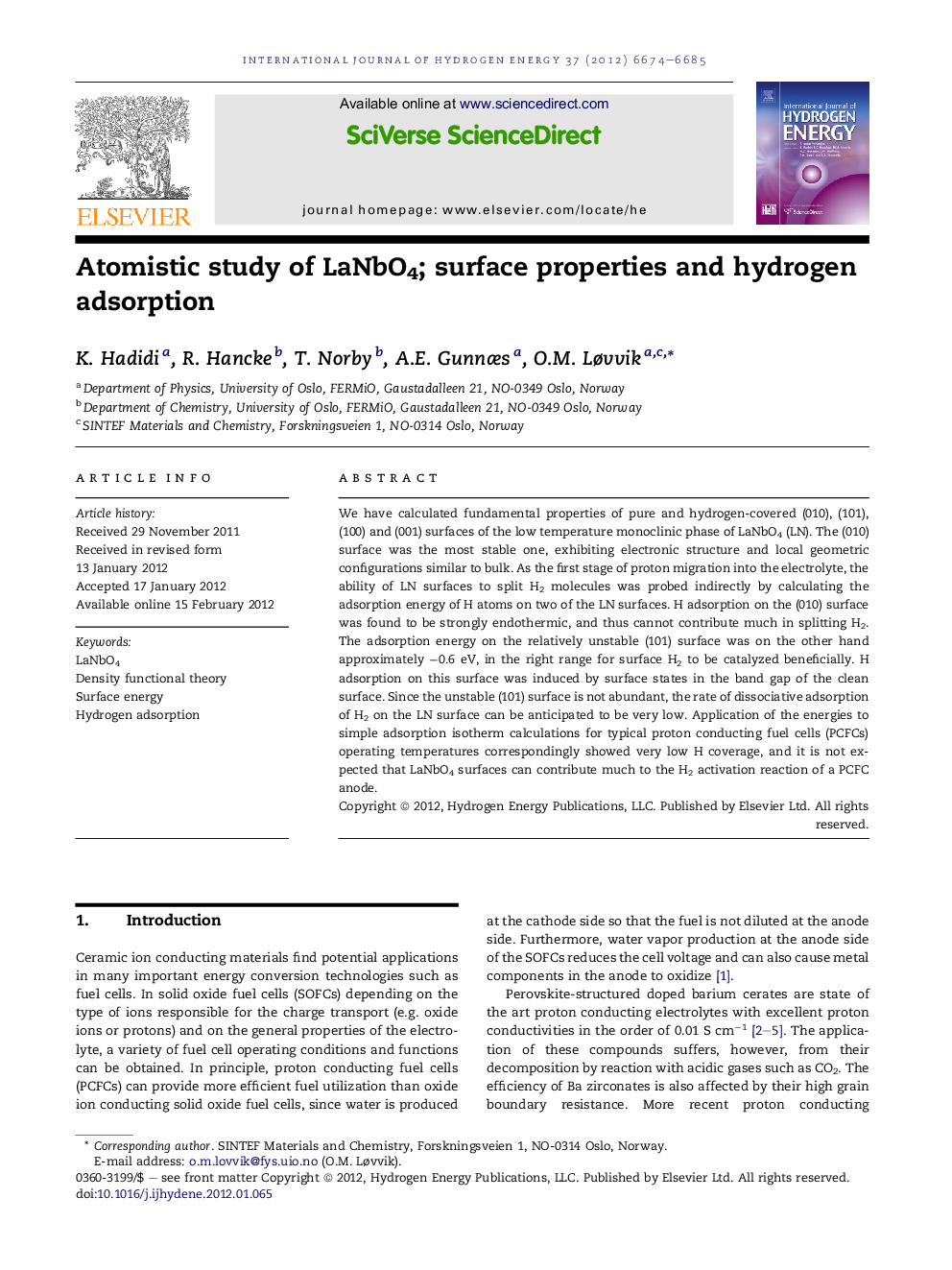| Article ID | Journal | Published Year | Pages | File Type |
|---|---|---|---|---|
| 1276607 | International Journal of Hydrogen Energy | 2012 | 12 Pages |
We have calculated fundamental properties of pure and hydrogen-covered (010), (101), (100) and (001) surfaces of the low temperature monoclinic phase of LaNbO4 (LN). The (010) surface was the most stable one, exhibiting electronic structure and local geometric configurations similar to bulk. As the first stage of proton migration into the electrolyte, the ability of LN surfaces to split H2 molecules was probed indirectly by calculating the adsorption energy of H atoms on two of the LN surfaces. H adsorption on the (010) surface was found to be strongly endothermic, and thus cannot contribute much in splitting H2. The adsorption energy on the relatively unstable (101) surface was on the other hand approximately −0.6 eV, in the right range for surface H2 to be catalyzed beneficially. H adsorption on this surface was induced by surface states in the band gap of the clean surface. Since the unstable (101) surface is not abundant, the rate of dissociative adsorption of H2 on the LN surface can be anticipated to be very low. Application of the energies to simple adsorption isotherm calculations for typical proton conducting fuel cells (PCFCs) operating temperatures correspondingly showed very low H coverage, and it is not expected that LaNbO4 surfaces can contribute much to the H2 activation reaction of a PCFC anode.
► Surfaces of LaNbO4 were studied by density functional theory. ► The most stable (010) surface has low hydrogen adsorption energy. ► Less stable surfaces react more strongly with hydrogen. ► This explains why oxides need metallic catalysts for efficient fuel cell operation.
